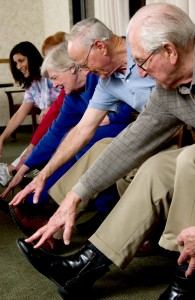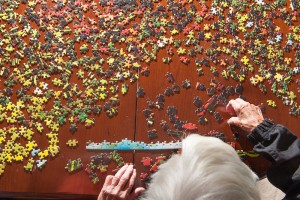 Let’s imagine that you have dementia. What would you miss? What would you forget about that you enjoy? We all forget the details of our lives and often take the little things we enjoy for granted. People living with dementia can rarely seek out enjoyable activities independently and often even forget what used to bring them pleasure. That is unless memory is triggered. Knowing that, how might you activate pleasure linked to past experiences?
Let’s imagine that you have dementia. What would you miss? What would you forget about that you enjoy? We all forget the details of our lives and often take the little things we enjoy for granted. People living with dementia can rarely seek out enjoyable activities independently and often even forget what used to bring them pleasure. That is unless memory is triggered. Knowing that, how might you activate pleasure linked to past experiences?
One great resource is the small book titled, 14,000 Things to be Happy About by Barbara Ann Kipfer. She gives us hundreds of things that make us smile because they conjure up the sights, sounds, smells, and feel of what it’s like to experience them. Dairy farms, fresh flowers, the sound of tap dancing, a camping tent, finger painting, candy apples, the smell and color of fresh fruits, bubble gum, bridges, and puppies are a few examples. You can pick up her book at any bookstore or even thrift stores to prompt memories.
Or, along with elders, come up with your own “Happy Book”. Then think of ways to bring those experiences back again for people living in your community. For example, we put up a tent in the backyard at our community and had a campfire in a small charcoal grill. That changed the whole feel of the backyard; it became a campsite that one family had enjoyed on vacations. The stories shared around that fire were priceless and they would never have relived the time together without the simple trigger of a tent and campfire. From such stories you will find even more things that you can use another time to bring enjoyment to so many people.
 It’s 10:30 in the morning. Your job is to facilitate the reading of the morning newspaper to a group of dementia care patients and you have a choice as to how to best carry it out.
It’s 10:30 in the morning. Your job is to facilitate the reading of the morning newspaper to a group of dementia care patients and you have a choice as to how to best carry it out.

